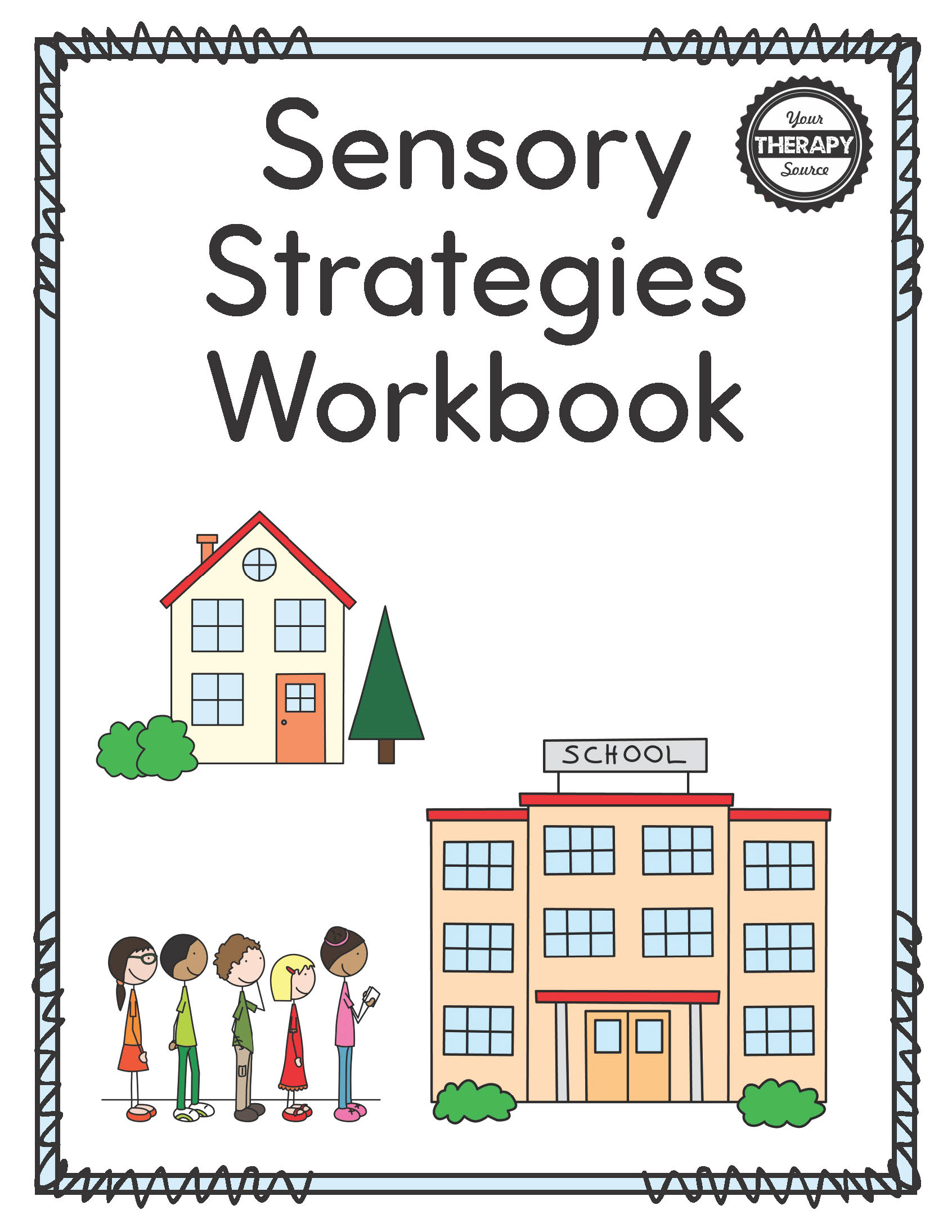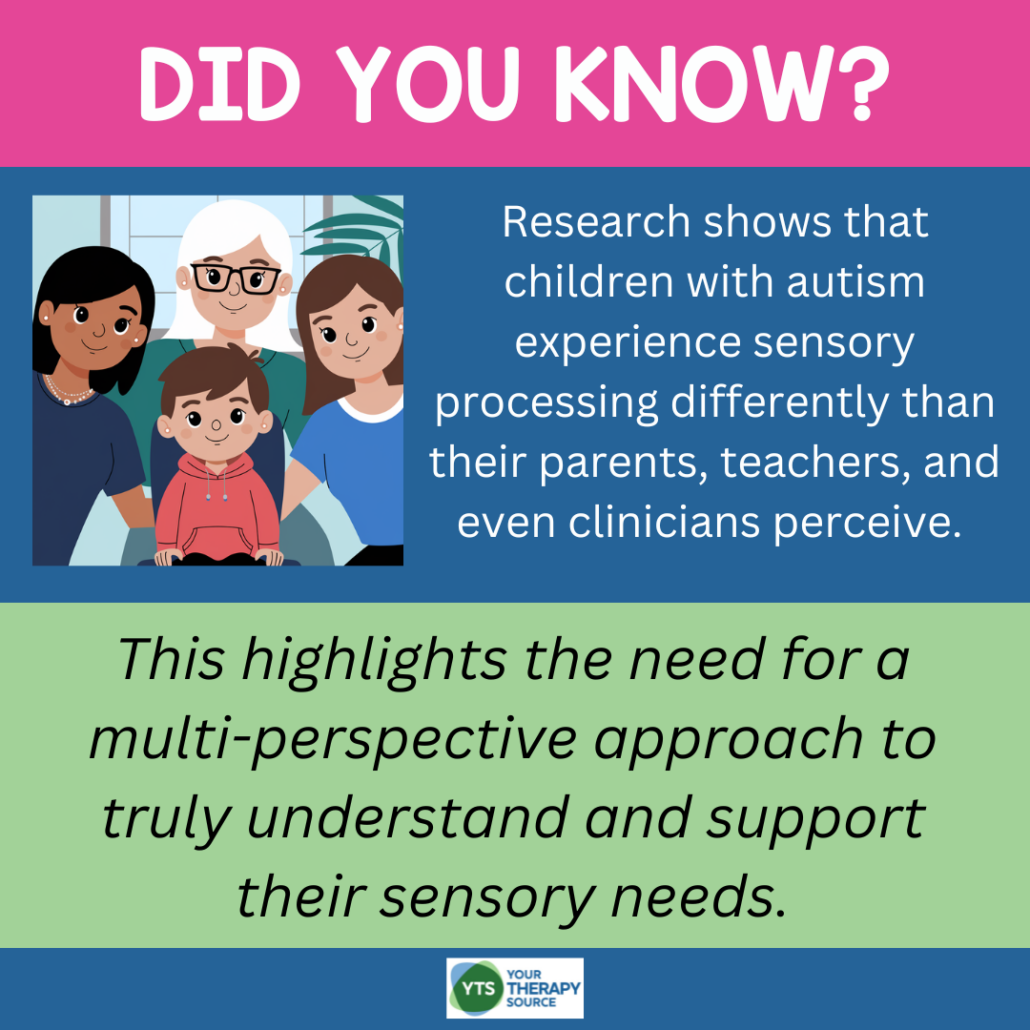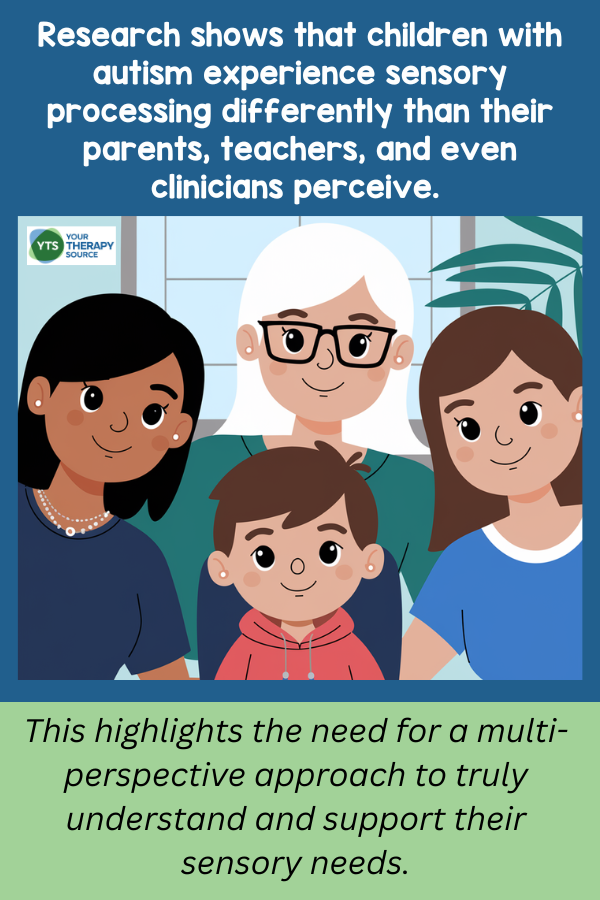Perspectives on Sensory Processing in Children with Autism – What Does the Research Say?
Understanding sensory processing in children with autism is essential for parents, educators, and occupational therapy providers. Sensory processing differences affect daily life, school participation, and family dynamics. Recent research explored sensory processing in children with autism from multiple perspectives.

SENSORY PROCESSING AND AUTISM
Sensory processing is how the nervous system receives and interprets sensory input from the environment. Children with autism often experience sensory processing challenges, known as Sensory Processing Disorder (SPD). According to research, 45% to 96% of children with autism demonstrate sensory differences, including:
- Overresponsivity – heightened sensitivity to sensory input (e.g., covering ears in response to noise).
- Underresponsivity – diminished response to sensory stimuli (e.g., not noticing a loud sound).
- Sensory seeking – craving intense sensory experiences (e.g., spinning, jumping, or chewing objects).
These differences can impact daily routines, participation in activities, and interactions with others.

Sensory Strategies Workbook
CHILDREN’S PERSPECTIVE ON SENSORY PROCESSING
Children with autism perceive and describe sensory experiences differently. The study found that while children can express preferences (e.g., liking or disliking certain sensations), they often struggle to articulate why certain stimuli affect them. Some children may not recognize or report their own sensory sensitivities accurately, which makes direct observation by professionals essential.
CLINICIANS’ PERSPECTIVE ON SENSORY PROCESSING
Clinicians use standardized tools like the Sensory Processing Measure (SPM) and the Sensory Adventure Measure (SAM) to assess sensory processing challenges. The research suggests that clinicians’ observations provide valuable insights beyond parental and teacher reports. Clinicians noted that children with autism exhibited more sensory processing challenges than typically developing peers, particularly in modulation (regulating responses to sensory input) and seeking behaviors.
PARENTS’ PERSPECTIVE ON SENSORY PROCESSING
Parents observe sensory behaviors in everyday settings, including home routines, mealtime, and play. The study found that parents of children with autism reported fewer sensory difficulties compared to teachers. This discrepancy may be due to structured home environments that accommodate their child’s sensory needs, while school settings present more challenges. Parents play a crucial role in identifying sensory triggers and supporting their children in managing sensory input.
HOW ARE ALL OF THESE PERSPECTIVES RELATED TO EACH OTHER?
The study found moderate correlations between reports from parents, teachers, and clinicians. By integrating these perspectives, a more comprehensive understanding of a child’s sensory needs emerges, leading to better support strategies. While all perspectives contribute valuable information, differences exist in how sensory processing difficulties are observed:
- Teachers tend to report more sensory-related challenges due to structured classroom environments.
- Parents provide insights into sensory responses at home but may not see all challenges their child faces in other settings.
- Clinicians use objective assessments to identify sensory difficulties that may not be apparent in everyday observations.
KEY POINTS
To help children with autism navigate sensory processing challenges, consider these key takeaways from the research:
- Sensory processing differences are common in children with autism and impact daily life.
- Direct observation by clinicians provides critical insights beyond parental and teacher reports.
- Children may struggle to describe their sensory experiences, so multiple perspectives are needed.
- Sensory-friendly strategies at home and in school can improve participation and comfort.
- Collaboration among parents, educators, and clinicians enhances support for children with sensory processing difficulties.

MORE HELPFUL RESOURCES
For additional insights on sensory processing and autism, explore these articles:
- Types of Sensory Processing Disorder
- Supporting Sensory Processing in Children with Autism
- Autism and Sensory Processing Disorder
Understanding sensory processing from different perspectives allows for more effective interventions and improved quality of life for children with autism. By working together, parents, educators, and clinicians can create environments that support children’s sensory needs and help them thrive.
REFERENCE
Rajuan, G., Liberman, L., & Bart, O. (2024). Sensory Processing in Children With Autistic Spectrum Disorder: Clinicians’, Parents’, Teachers’ and Children’s Perspectives. Focus on Autism and Other Developmental Disabilities, 10883576241282302.



